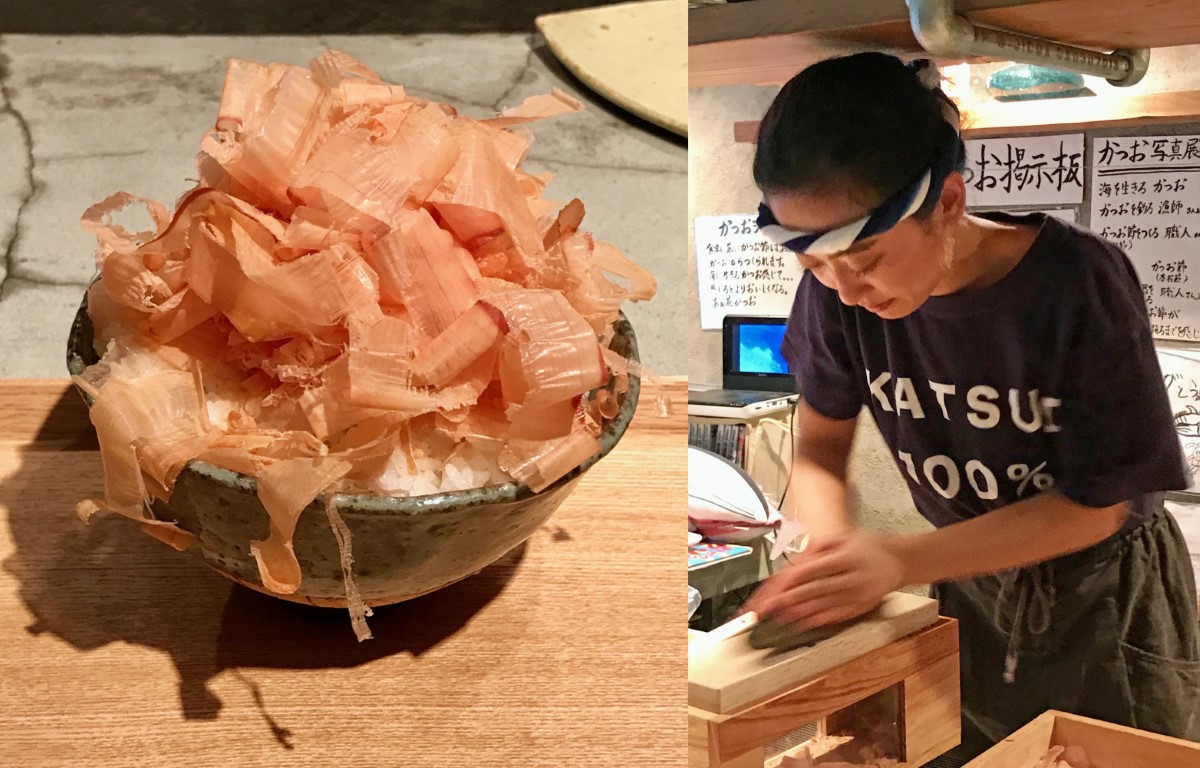When it comes to seafood, we all have our favorites. It might be maguro (tuna) sushi, charcoal-grilled unagi (eel), a salmon steak or a nice fillet of batter-fried plaice. For Mai Nagamatsu, though, there's no question: Her fish of choice is katsuo (skipjack tuna).
That's obvious from the name she's given her breakfast counter, Katsuo Shokudo ("Skipjack Diner"). But don't roll up expecting platters of gleaming sashimi, tataki (seared skipjack) or even side dishes of the cooked fish. Nagamatsu's focus is on katsuobushi, the cured blocks of skipjack that have long been the prime source of umami seasoning in Japan.
The traditional process by which the blocks are made is long and labor-intensive, involving heat, smoke, mold and considerable expertise in fermentation to turn raw fish into concentrated umami goodness. Shaved into paper-thin slivers — often misnomered in English as "bonito flakes" (bonito is a different species of fish) — this is the essential source of flavor in the dashi soup stock that underlies all Japanese cuisine.



